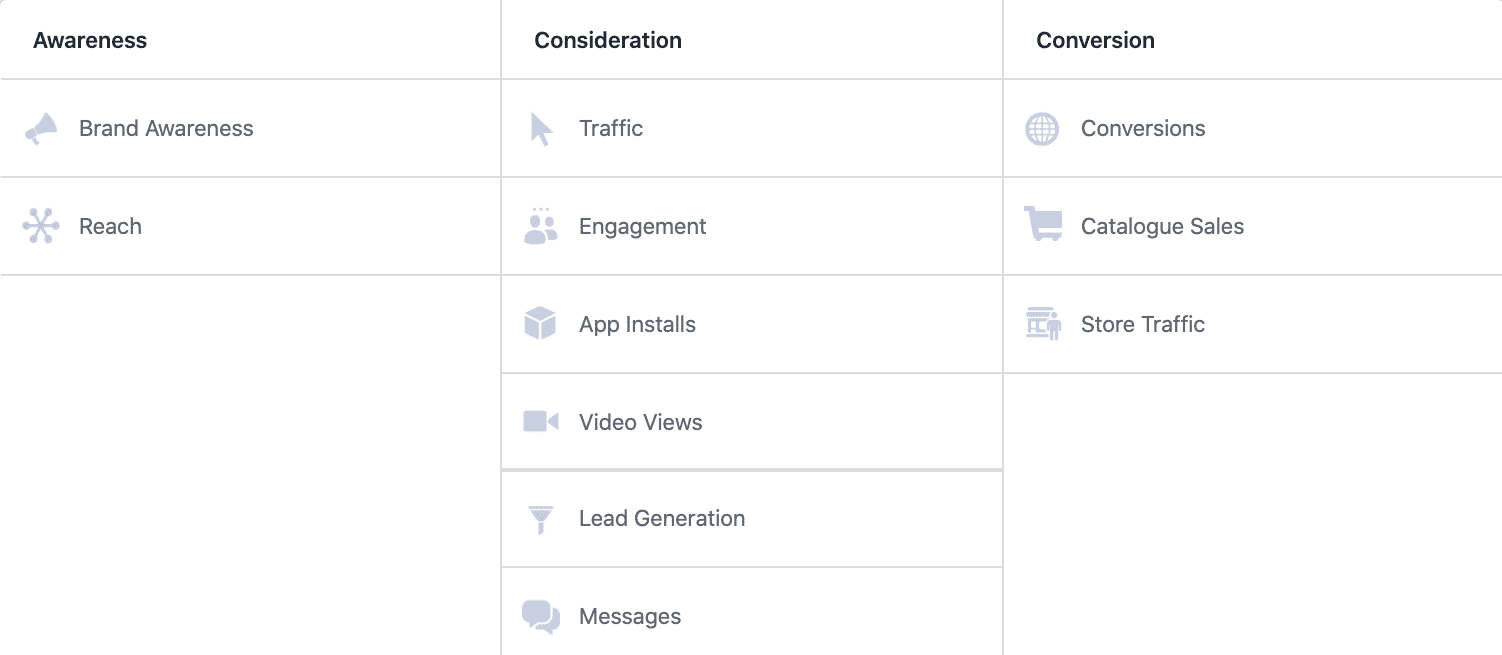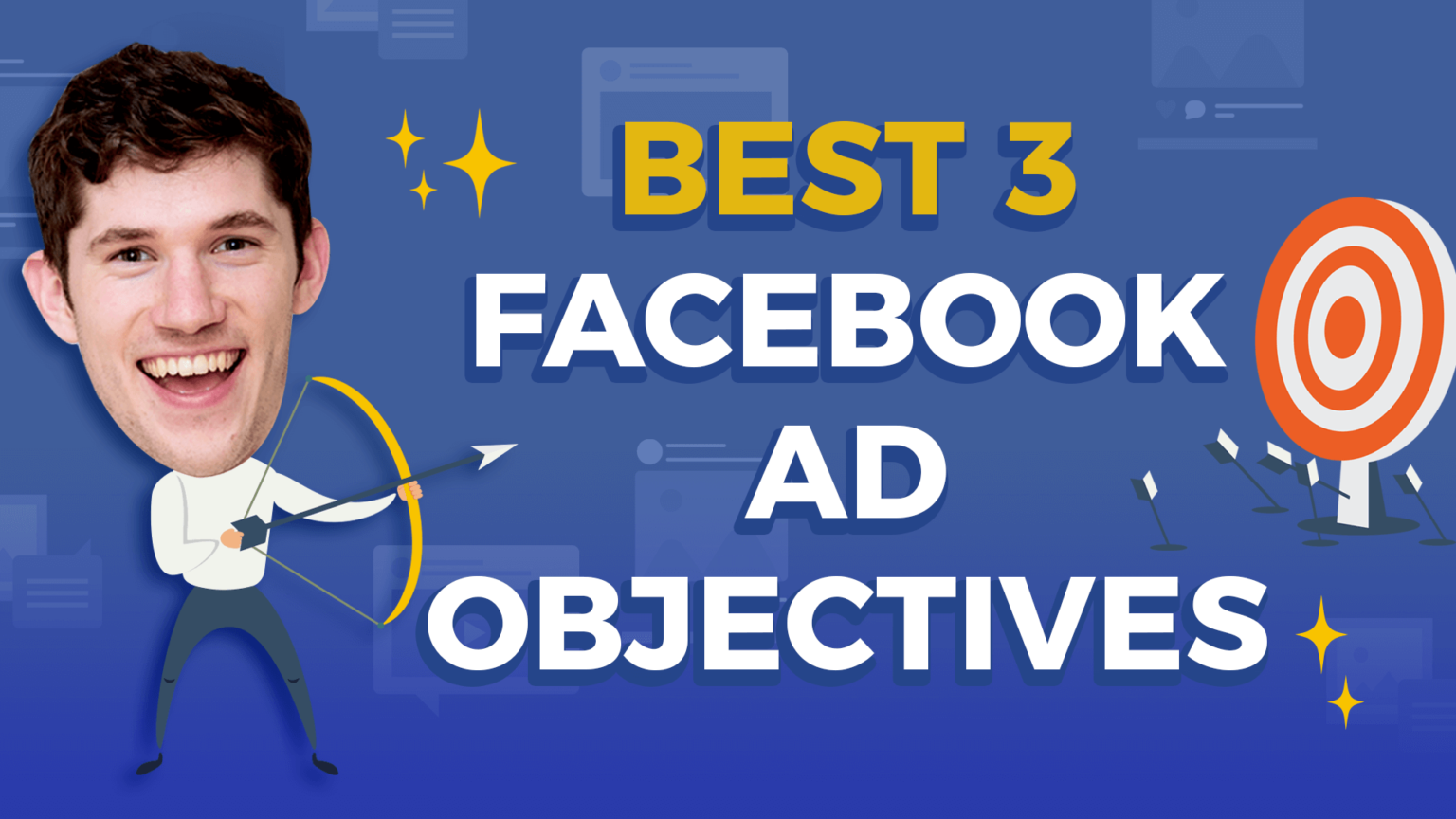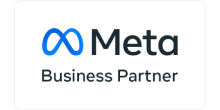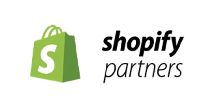Ever attempted to create a Facebook ad campaign, only to question yourself: which Facebook ad objective should I pick?!
When you set up your Facebook Ad campaign, the system will ask you to choose a campaign objective.
Sounds simple.
But then you’re presented with an intimidating list of Facebook ad objectives with super-specific titles: reach, engagement, consideration, conversion, awareness.
The list goes on.
And Facebook doesn’t give you a whole lotta’ help on which one is best for you.
At Yatter, we often perform advertising audits for potential clients and find the wrong Facebook ad objectives being used time and time again.
It can be confusing.
And people generally plump for the wrong objective (without knowing it!)
If this is you, then read on. This article will help you to understand which Facebook Ad objectives you should use – and why.
What are Facebook advertising objectives?
When you first create a campaign on Facebook, you’re asked you to define your campaign objectives.
It can be a little overwhelming. But your choices at this level will determine how Facebook runs your campaign – so it’s essential to get it right.

You’ll find that campaign objectives are broken down into three categories:
- Awareness
- Consideration
- Conversion
In each, you can choose:
- Brand Awareness
- Reach
- Traffic
- Engagement
- App installs
- Video views
- Lead generations
- Messages
- Conversions
- Catalogue sales
- Store traffic
It can be confusing.
However, it is vital you get this right.
Vital.
You must choose the right one for your campaign because:
- It tells Facebook how to optimise your campaign
- It helps you more effectively track the results of your campaign
Bottom line:
- It helps you get better results
How To Get Better Results with a Clearly Defined Ad Campaign Objective
When we choose a campaign objective, we’re telling Facebook what we want them to do.
If we choose an Awareness campaign, we’re asking Facebook to reach as far as possible – and Facebook will seek to do that, regardless of clicks, conversions & engagement
If you choose an Engagement objective, you’re telling Facebook that you want Likes, Comments, and Shares.
And by the way, this is what you’re telling Facebook when you boost a post.
Which is why you’ve probably not seen any *real* results from your boosting…
The Facebook Boost Post Defaults
A Boosted post defaults to the Engagement objective – and this is why many people aren’t getting the results they’re hoping for.
The Boost facility doesn’t tell Facebook that you want sales, and it doesn’t tell them that you want clicks into your sales funnel.
So, it’s essential to be specific about what we want to achieve when we set up our Facebook ad campaigns.
Facebook knows us
I’ve been using Facebook for over ten years. And chances are, you probably have as well.
And over that period, Facebook has developed an amazingly accurate profile of us as consumers.
Every time we Like a post or share a post or comment; every time we click on a website via a Facebook button; every time we explore the web; Facebook is watching. They know if you’re the type of person who buys something as a result of a Facebook ad or if you click on blogs, or you read shared articles.
Whatever you’ve been doing, Facebook has been monitoring that activity and categorising you.
Now, that’s kind of terrifying if we think about it.
But:
From a marketing perspective, it’s genius.
It makes Facebook an incredibly valuable resource because their algorithm knows (and can predict) how their users are likely to behave.
This is where Facebook ad objectives come into play.
Which Facebook Advertising Objective should I use for my campaign?
There are lots of objectives, but – in my experience – these are the three objectives that will pay dividends and get you the right kind of response from your campaign.
Conversions Objective
Use this if you want someone to take an action on your site.
If you want someone to visit your site; to fill in a form; to buy or opt-in, or to join a webinar, then this is the objective to choose.
If you want someone to take a particular action, then you should use the Conversions objective.
You’ll need to set up tracking (using the Facebook pixel and custom conversions or standard events) to gauge your success.
Your tracking will tell you how much it costs you to get a customer to opt-in or buy – giving you a clear ROI and an approach to improving your outcomes for your next campaign.
But more importantly, Facebook will optimise for conversions. Facebook will serve your ads to the people it believes are most likely to convert.
Of course, you’ll still be able to see your click-throughs, etc., but Facebook is optimising your campaign for that specific action.
Traffic
Use the Traffic objective when you’re trying to draw more people towards your website, but you’re not so bothered about them completing a conversion activity.
Perhaps your campaign is all about sending your audience to a third-party website; if you’re an affiliate for a sales site, for example. Or maybe you’re promoting a blog.
Facebook learns and improves as the campaign progresses. Your audience is likely to be unique to you, and each campaign is going to be different.
So, as your campaign continues, Facebook learns who is responding, and they serve your ad to people with similar behavioural profiles; meaning your success rate improves as the campaign progresses.
Engagement or Video Views
If you’re a video creator and you want more people to watch your videos, then I suggest that you set your campaign to either engagement or video views.
I’m giving two options here because it depends on what you want from your campaign:
If you choose Video Views, you’ll get people who are likely to watch your video, but you might not get the engagement – the Likes, the comments, and the shares.
If you want more engagement (plus the views), then choose Engagement.
Personally, I go for engagement.
I like to see and respond to the comments and social reactions because – for me – that gives me a better opportunity to develop my brand.
App Installs
If you have an app and you’re trying to market that, then choose the App Installs objective.
This will let you determine how much you’re having to pay for each conversion which is vitally important when you’re calculating your ROI.
Catalogue Sales
If you’re an eCommerce brand, then you should focus a lot of your efforts towards catalogue sales.
This means that Facebook will run dynamic ads to people that have already visited your site; sending them a picture or a video or a specific ad based on their previous experience when they interacted with your website.
Not just that though, you can also run dynamic ads to people based on how they’ve interacted with other sites.
Dynamic product ads are so powerful for people running online stores.
Get started with Yatter
So, there you have it – the top three (+2 bonus) Facebook ad objectives for you to use when creating an ad campaign.
If you’re looking for more help on optimising your Facebook campaign, get in touch with the advertising experts at Yatter. We’ll be able to audit your campaigns and get you on track.






